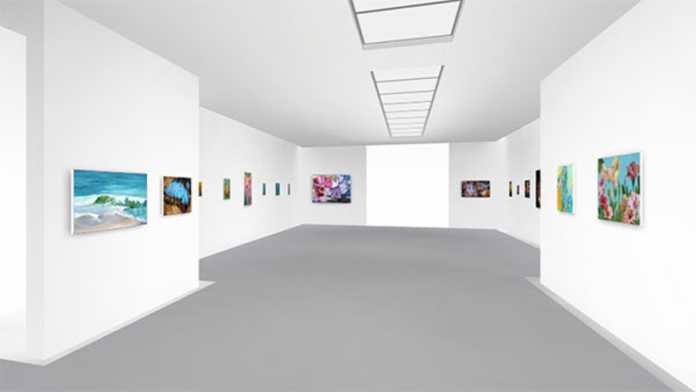Earlier it was ever so easy and convenient to step into a museum or an art exhibition where one could spend hours admiring and trying to figure out the artist’s thought process. However, thanks to the pandemic, technology has helped us shift experiences like these online. They may not be completely at par with looking at the pieces in person; however, it does allow us to look at amazing artworks from the comfort of our homes, because along with challenges, come possibilities- an online art exhibition enables so many people across the world to enjoy the art. Furthermore, event planners could tweak a few things to give the attendees a remarkable experience.
Informative and immersive:
On a Virtual Exhibition Platform, the goal is to provide the viewer with a heightened experience which can be done by creating a blog post talking about and explaining the art piece in-depth, along with the artists’ thoughts and feelings, measurements, and mediums, although not too intensive, it should be crisp and readable so that it’s easy to understand. This helps the viewer understand what they’re looking at. Using the Virtual Art Exhibition Platform and the facilities it provides, it might be a good idea to opt for the immersive setup. This helps the viewer connect with the works of art and increases engagement.
Make sure the lighting is good:
Art enthusiasts will be looking at the pieces through a two-dimensional screen and therefore don’t have the ability to gauge what it would look like in real life. That’s where the lighting comes in. The lighting in terms of colours and positioning should be picked in such a way that it highlights and emphasizes the most prominent parts of the artwork.
Spread the word:
Encourage attendees to whip out their phones and socials so that they could post about it, and bring in more art enthusiasts. This is also a great way to increase the number of people that know about the gallery and thus boost its image. It also helps with future exhibitions by bringing in more art fanatics. Further, a continuous stream of meaningful communication with them will also help the gallery understand the likes and dislikes of the viewers.
Selling art pieces:
Art is usually very expensive, and with good reason, it captures a variety of thoughts and emotions. That is why it’s important to create an environment that caters to the buyers so that they can easily select the works they want to purchase. Because presenting a piece of work on a wall in comparison to a screen is totally different, majorly because people don’t know the dimensions of the piece, therefore one way to do this would be by giving the viewers a sense of proportion and dimension so that they know what it is that they are buying and thus by providing all the information, encouraging attendees to buy. Online apps can facilitate this easily and it might also be a good idea to look through the settings and tools provided by the Virtual Exhibition Platform to make the process faster and easier for the team.
Easy transactions:
Once an attendee likes a piece and is willing to buy it, a smooth transaction stream should be set up. All the payment information should be easily available when they look at the information of the art piece. The process should also be clearly explained if in case there is an auction or the piece is ready to be sold on the spot. It might be a good idea to test out the process before the main event because art pieces are often sold at very high prices and any kind of glitch or even the tiniest error could make the gallery bad and might reduce the number of attendees and potential buyers in the future.
Presentation:
While looking at a piece in front of the eyes, it’s easier to see the contrasts, and the colours make the piece look very well presented. This could be mimicked on the Virtual Exhibition Platform as well. By using the tools provided, one can make the art look very well presented thus increasing the chances of people buying it. For example, framing the artworks virtually- based on the colours in the painting or the material used, select the most suitable one. Alignment too can make a difference, if they are positioned in a row, side by side, or on one wall per art piece. Consider the colours used size and the scale because the goal is to align and arrange in the way that looks the most aesthetically pleasing.
Promoting the art show:
Before the main day, it might be a good idea to have a run-through and test out all the operations and processes to avoid any glitches. Have team members bring their family members to find any small mistakes or details missed. Also, ask them to bring in their friends, to increase the number of attendees and possible buyers. Use social media. Create an account on various social media platforms.
Start telling followers and other art enthusiasts about the exhibition, social media is a great tool that can be used to connect with like-minded people. Like movies have trailers that leave people wanting more, post parts of certain art pieces to capture the attention and draw the art fanatics to the event. An old but sure way of reaching out to potential clients would be through email marketing. Similarly, include images and videos of parts of the artwork to get them to attend.
Conclusion
Just like a Virtual Medical Exhibition Platform, such as Dreamcast, that connects exhibitors from the medical industry to buyers all around the globe, having a virtual art exhibition would be able to host art fans, not just those who are local, but around the globe will be able to attend and buy the art pieces which is a great way to open the gallery to global recognition.







